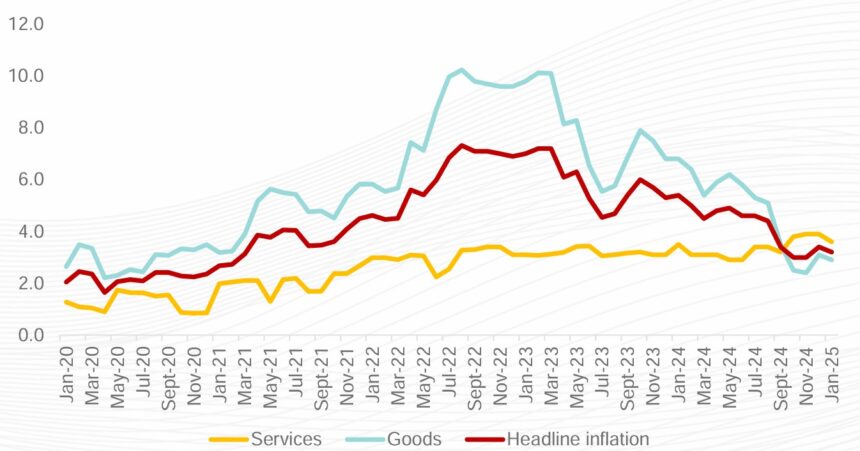The annual domestic inflation for January 2025 stood at 3.2%, the Namibia Statistics Agency (NSA) revealed last week.
In its consumer price index report, the NSA stated that inflation was lower than the 5.4% registered in January 2024.
The statistician general, Alex Shimuafeni, said the monthly inflation rate was 1.1%, higher than the 0.2% registered during the preceding month.
Annual inflation in the Khomas region, classified as zone two, recorded the highest rate at 3.5%.
The zone one regions, which include Kavango East, Kavango West, Kunene, Ohangwena, Omusati, Oshana, Oshikoto, Otjozondjupa and Zambezi, recorded 3.3%.
The //Kharas, Erongo, Hardap and Omaheke regions in zone three recorded the lowest rate at 2.6%.
Shimuafeni reported that an analysis of average retail prices for selected products in January 2025 showed that consumers in Zone 3 paid the highest price for a 5-kilogramme bag of maize meal, costing N$71.57.
In comparison, consumers in Zone 2 paid N$70.49 for the same bag, while those in Zone 1 paid the lowest price of N$68.99.
Additionally, consumers in Zone 3 paid the highest price for 100 grammes of Rooibos teabags at N$35.66.
Zone 1 followed with a price of N$33.23, while the lowest price was found in Zone 2, where consumers paid N$32.49.
The primary drivers of the annual inflation rate in January were food and non-alcoholic beverages, contributing 1.1 percentage points.
This was followed by housing, water, electricity, gas and other fuels, which contributed 0.7 percentage points.
Alcoholic beverages and tobacco contributed 0.5 percentage points.
“The inflation rate measures the change in the Consumer Price Index for the month under review, compared to the previous month, and the corresponding month in the previous year.
“The inflation rate is vital in formulating economic policy, especially conducting monetary policy to maintain price stability and control consumers’ spending. The consumer price index is published about 15 days after the end of the reference month to which it relates,” he said.
– Nampa


